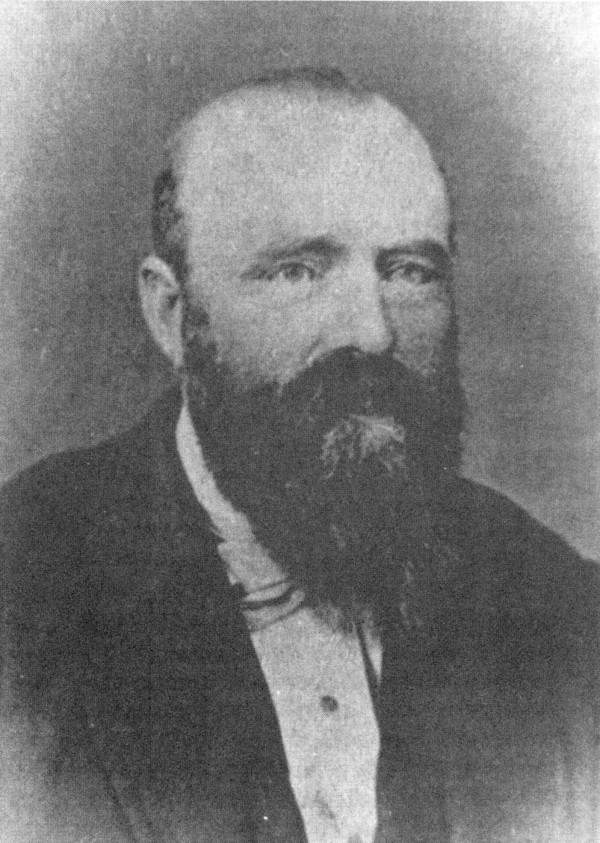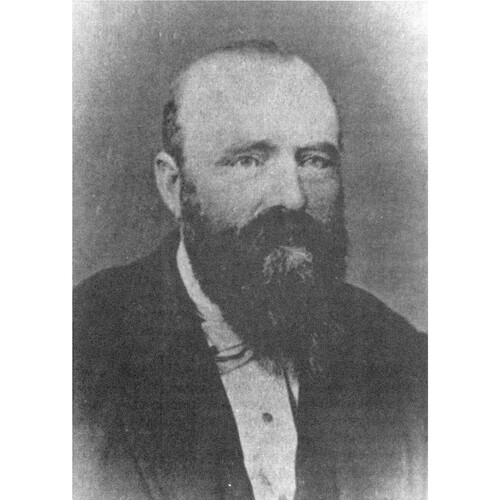
Source: Courtesy of Wikimedia Commons
YOUNG, ROBERT, businessman, civil servant, and politician; b. 11 Nov. 1834 in Tracadie, N.B., eldest son of James Young and Ann Ferguson; m. 23 Dec. 1857 Sarah Hubbard in Tignish, P.E.I., and they had three sons and four daughters; d. 3 Feb. 1904 in Caraquet, N.B.
After attending primary school in Chatham, N.B., Robert Young went to Caraquet in 1851 to manage a branch of his father’s fishing firm; known as James Young and Sons, it became one of the biggest exporters of fish in the Baie des Chaleurs region. The firm exported dried fish and was also in the business of canning mackerel and other fish, lobster, and blueberries. When his father died in 1866, Young took the enterprise in hand. Given the abundance of lobster and the growing interest in this product in overseas markets, he decided to invest more heavily in canning it, as did several other businessmen in Gloucester County at the end of the 19th century. In 1882 he owned a lobster cannery at Caraquet and another at Black Point in Little Shippagan. When he retired, his son Frederick Temple Blackwood took over the business.
Young belonged to a class of powerful English-speaking entrepreneurs in Gloucester County. He held various offices in the provincial administration at the local level, among them that of commissioner of lighthouses and buoys for the port of Caraquet. Elected as a Liberal to the House of Assembly of New Brunswick for Gloucester in 1861, he was a member and chairman of several committees. He also represented Gloucester on the Board of Agriculture.
Young understood the particular circumstances of Gloucester County, where Acadians constituted an immense majority of the population. In 1862, for example, he came out in favour of translating the debates of the assembly into French. Five years later a proposal was presented to the house in his name for a study to examine the feasibility of publishing in French in a French newspaper public notices issued by the heads of government departments. Young was also interested in the lazaretto at Tracadie [see Amanda Viger]. With his father he had built the first two lazarettos, in 1849 and 1853, on land that his father had sold to the provincial authorities, and he would be delegated to go to Ottawa in 1879 when the transfer of the lazaretto to the federal authorities was being negotiated. The following year his brother-in-law Alfred Corbett Smith would become medical inspector of the establishment. Young’s greatest concern, however, was the interests of the businessmen of Gloucester County. In 1862 he presented the assembly with a petition asking that the county be divided into two. Designed ostensibly to ensure more efficient administration, the plan in fact aimed at concentrating political and economic power in the hands of a small group of Caraquet businessmen; it was defeated before it reached third reading.
Re-elected in 1865, Young was again returned in 1866, in the elections held to decide the question of confederation; he had stood as an anti-confederate. He sat in the assembly until September 1867, when he was called to the Legislative Council. In 1872 the government of George Edwin King appointed him to the Executive Council, of which he became president.
Young’s political career was notable above all for the role he played in the school question. In 1871 the government of New Brunswick set up a system of compulsory public education, non-denominational and subsidized by a school tax. As a result Catholic schools were doomed to disappear. In the Legislative Council Young had vainly supported a change in the bill to satisfy Catholics. But when he became president of the Executive Council, he sided with the government and was instrumental in implementing the legislation. Early in 1873 he had the magistrates in Gloucester who refused to have the act applied replaced. The school legislation was at stake in the elections of the following year. Premier King’s party won a signal victory, but in Gloucester two Catholics opposed to the act, Théotime Blanchard* and Kennedy Francis Burns*, were elected. At the same time Blanchard accused Young of having misappropriated funds intended for building roads in Gloucester, but the assembly concluded that there were no grounds for an investigation. The social and political climate had been inflamed by the tensions that had built up since 1871.
In November 1874 the townspeople of Caraquet, most of whom had refused to pay the school tax, held a meeting, with Blanchard in the chair, to elect their parish officials. The Protestants in the locality, who made up only a small minority of the population, questioned the legality of the vote. In the face of this opposition Young convened a secret meeting on 4 January at which three Protestants were elected. These appointments were approved by the quarter sessions of Gloucester County. On 14 January a public meeting held with the aim of imposing the school tax ended in a scuffle. The next day a group of Acadians turned out to prevent another attempt to apply the act. Helped on by alcohol, the demonstrators caused some property damage, and went to Young’s store during his absence and threatened his wife and employees. In the days following Young planned his revenge. On 26 January, at his request, some ten constables bearing arrest warrants went to Caraquet to charge those who had been responsible for the riot on 15 January. The next day about 20 English-speaking “volunteers,” who had been recruited by Young, came to back them up. When a detachment of “Young’s army” entered a house where some Acadians had gathered, feeling began to run high and shots were exchanged. An Acadian and one of the volunteers were mortally wounded. Nine Acadians were accused of being accessories to the death of the latter, but after two trials they were freed. According to popular tradition, Young was directly responsible for the outburst of violence in January 1875. Sensing that power had been slipping out of his hands since the controversy over the school act, he had wanted to impose his authority in Gloucester.
Robert Young continued as president of the Executive Council in the governments of John James Fraser* and Daniel Lionel Hanington until 1883. Still a member of the Legislative Council, he accompanied Hanington to Ontario to investigate the functioning of a unicameral legislature. After the Legislative Council was abolished in 1892 during Andrew George Blair’s administration, he ran unsuccessfully for Gloucester in the 1896 federal elections. In 1904, at the age of 69, Young died of heart disease at his home in Caraquet and was buried in the local Presbyterian cemetery.
PANB, MC 1156, IX, pt.ii: 54; RS24, S79, B75; P38. Daily Telegraph (Saint John, N.B.), 4 Feb. 1904: 5. Gleaner (Chatham, N.B.), 18 Jan. 1873: 2; 16 Aug. 1873: 2. Le Moniteur acadien, 3 mars 1881: 2. Royal Gazette (Fredericton), 30 March 1859, 3 May 1865. St. John Daily Sun, 11 June 1892, supp.: 4. World (Chatham), 22 Feb. 1882: 2; 6 Feb. 1904: 2. Elections in N.B. Les familles de Caraquet: dictionnaire généalogique . . . , Fidèle Thériault, compil. ([Fredericton], 1985). Hannay, Hist. of N.B. M. J. Losier and Céline Pinet, Children of Lazarus: the story of the lazaretto at Tracadie (Fredericton, [ 1984]). N.B., House of Assembly, Journal, 1862–67; Reports of the debates, 1862–67; Synoptic report of the proc., 1874; Legislative Council, Journals, 1871. G. F. G. Stanley, “The Caraquet riots of 1875,” Acadiensis (Fredericton), 2 (1972–73), no.1: 21–38. P. M. Toner, “The New Brunswick separate schools issue, 1864–1876”
Cite This Article
Jean-Roch Cyr, “YOUNG, ROBERT,” in Dictionary of Canadian Biography, vol. 13, University of Toronto/Université Laval, 2003–, accessed December 31, 2025, https://www.biographi.ca/en/bio/young_robert_13E.html.
The citation above shows the format for footnotes and endnotes according to the Chicago manual of style (16th edition). Information to be used in other citation formats:
| Permalink: | https://www.biographi.ca/en/bio/young_robert_13E.html |
| Author of Article: | Jean-Roch Cyr |
| Title of Article: | YOUNG, ROBERT |
| Publication Name: | Dictionary of Canadian Biography, vol. 13 |
| Publisher: | University of Toronto/Université Laval |
| Year of publication: | 1994 |
| Year of revision: | 1994 |
| Access Date: | December 31, 2025 |



